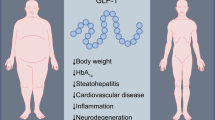Abstract
Purpose
Plecanatide, an analogue of uroguanylin, activates the guanylate cyclase C (GC-C) receptor found on the GI mucosal epithelial cells, leading to secretion of fluid, facilitating bowel movements. Plecanatide is being investigated as a potential treatment for constipating GI disorders. The aim of this investigation was to assess the safety, tolerability, pharmacokinetics (PK), and pharmacodynamics (PD) of single doses of plecanatide in healthy volunteers.
Methods
A total of 72 healthy volunteers at a single site were randomized in 9 cohorts to receive oral plecanatide or placebo from 0.1 to 48.6 mg. Plasma PK samples were collected pre-dose and post-dose. PD assessments included time to first stool, stool frequency, and stool consistency using the Bristol Stool Form Scale. All adverse events were documented.
Results
Plecanatide was safe and well-tolerated at all dose levels. A total of 17 of 71 subjects (23.9 %) reported 25 treatment-emergent adverse events (TEAEs) during the study. The number of TEAEs reported by subjects who received plecanatide or placebo was comparable (24.5 vs. 22.2 %, respectively). There were no dose-related increases in TEAEs or any SAEs reported. No measurable systemic absorption of oral plecanatide was observed at any of the oral doses studied, utilizing an assay sensitive down to 1 ng/mL.
Conclusions
Plecanatide, an oral GC-C agonist, acting locally within the GI tract without measurable systemic exposure, was safe and well-tolerated in single doses up to 48.6 mg. The study was not powered for statistical analyses, but trends in PD parameters supported continued clinical development.


Similar content being viewed by others
References
Higgins PD, Johanson JF. Epidemiology of constipation in North America: a systematic review. Am J Gastroenterol. 2004;99:750–759.
Bharucha AE, Phillips SF. Slow transit constipation. Gastroenterol Clin North Am. 2001;30:77–95.
Pare P, Ferrazzi S, Thompson WG, Irvine EJ, Rance L. An epidemiological survey of constipation in Canada: definitions, rates, demographics, and predictors of health care seeking. Am J Gastroenterol. 2001;96:3130–3137.
Ambizas EM, Ginzburg R. Lubiprostone: a chloride channel activator for treatment of chronic constipation. Ann Pharmacother. 2007;41:957–964.
Linzess (linaclotide) Full Prescribing Information. Available at: http://www.frx.com/pi/linzess_pi.pdf. Accessed January 11, 2013.
Manabe N, Rao AS, Wong BS, Camilleri M. Emerging pharmacologic therapies for irritable bowel syndrome. Curr Gastroenterol Rep. 2010;12:408–416.
Camilleri M. Pharmacology of the new treatments for lower gastrointestinal motility disorders and irritable bowel syndrome. Clin Pharmacol Ther. 2012;91:44–59.
Harris MS, Daniels OT. Core aspects of clinical development and trials in chronic idiopathic constipation. In: Catto-Smith AG, ed. Constipation-causes, diagnosis and treatment. Rijeka: InTech; 2012:147–172.
Forte LR Jr. Uroguanylin: physiological role as a natriuretic hormone. J Am Soc Nephrol. 2005;16:291–292.
Forte LR Jr. Uroguanylin and guanylin peptides: pharmacology and experimental therapeutics. Pharmacol Ther. 2004;104:137–162.
Bharucha AE, Waldman SA. Taking a lesson from microbial diarrheagenesis in the management of chronic constipation. Gastroenterology. 2010;138:813–817.
Shailubhai K. Therapeutic applications of guanylate cyclase-C receptor agonists. Curr Opin Drug Discov Devel. 2002;5:261–268.
Hamra FK, Eber SL, Chin DT, Currie MG, Forte LR. Regulation of intestinal uroguanylin/guanylin receptor-mediated responses by mucosal acidity. Proc Natl Acad Sci USA. 1997;94:2705–2710.
Lewis SJ, Heaton KW. Stool form scale as a useful guide to intestinal transit time. Scand J Gastroenterol. 1997;32:920–924.
Currie MG, Kurtz C, Mahajan-Miklos S, Busby RW, Fretzen A, Geis S. Effects of single dose administration of MD-1100 on safety, tolerability, exposure, and stool consistency in healthy subjects. Am J Gastroenterol. 2005;100:S328. (Abstract #894).
Barbera R, Feinle C, Read NW. Abnormal sensitivity to duedonal lipid infusion in patients with functional dyspepsia. Eur J Gastroenterol Hepatol. 1995;7:1051–1057.
Busby RW, Bryant AP, Bartolini WP, et al. Linaclotide, through activation of guanylate cyclase C, acts locally in the gastrointestinal tract to elicit enhanced intestinal secretion and transit. Eur J Pharmacol. 2010;649:328–335.
Lembo AJ, Schneier HA, Shiff SJ, et al. Two randomized trials of linaclotide for chronic constipation. N Engl J Med. 2011;365:527–536.
Acknowledgments
Authors are grateful to ClinPharm Consulting, LLC (Research Triangle Park, NC, USA) for their assistance in preparation of this manuscript. This study was funded by Synergy Pharmaceuticals.
Conflict of interest
All authors are employees of Synergy Pharmaceuticals, Inc.
Author information
Authors and Affiliations
Corresponding author
Rights and permissions
About this article
Cite this article
Shailubhai, K., Comiskey, S., Foss, J.A. et al. Plecanatide, an Oral Guanylate Cyclase C Agonist Acting Locally in the Gastrointestinal Tract, Is Safe and Well-Tolerated in Single Doses. Dig Dis Sci 58, 2580–2586 (2013). https://doi.org/10.1007/s10620-013-2684-z
Received:
Accepted:
Published:
Issue Date:
DOI: https://doi.org/10.1007/s10620-013-2684-z




